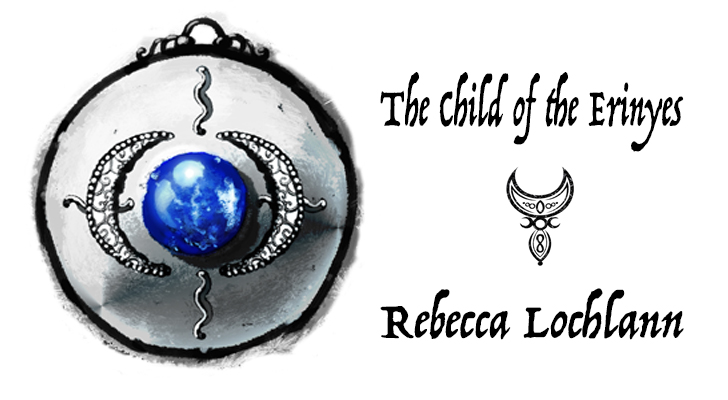Category Archives: Aridela
Aridela, lunar goddess, mistress of the labyrinth

Photo: Chris Geszvain Shutterstock
At the outset of The Year-god’s Daughter, our Aridela is only ten years old. Yet, fired by divine insight, she enters the bullring, determined to win glory for herself. Because of this act, her life becomes inexorably linked to the lives of two men from Mycenae.
There are two, perhaps three meanings to her name: Utterly Clear, and One Visible from Afar. Robert Graves translates it as The Very Manifest One.
Four words I might use to describe her: “uncomfortable in her skin.”
I will add more about Aridela as books in the series become available.
From Dionysos (Archetypal Image of Indestructible Life), by Carl Kerényi:
“…we may assume that in one aspect of her being Ariadne was a dark goddess. Among the Greeks the epithet “utterly pure” was attached preeminently to Persephone, the queen of the underworld, although other goddesses also were termed hagne. What seems significant here is the intensive contained in the first part of the name. A similarly accented attribute completed Ariadne’s character and provided another aspect. The Cretans also called her “Aridela,” “the utterly clear.” just as they also called Koronis “Aigle.” She could appear “utterly clear” in the heavens. The lunar character of Ariadne can no more be doubted than that of the crow-virgin, mother of Asklepios, who was able to shine like light.”
“Ariadne is described as a girl “with beautiful braids of hair,” an ornamental epithet that Homer confers more often on goddesses than on common girls. According to the Odyssey, (XI 321-22), Ariadne was a daughter of the “evil-plotting Minos,”–an epithet that presupposes the labyrinth as a place of death. Ariadne, the king’s daughter, was mortal, since she was killed by Artemis. She committed the sin of following Theseus, the foreign prince. Homer knew the story of how the hero and his band of seven youths and seven maidens were rescued by means of the famous thread, which is held in the hand in executing the difficult dance figure. The thread was a gift of Ariadne, and it was she who saved Theseus from the labyrinth. Even in this story, which has become so human, Ariadne discloses a close relationship, such as only the Minoan “mistress of the labyrinth” could have had, to both aspects of the labyrinth: the home of the Minotaur and the scene of the winding and unwinding dance. In the legend the Great Goddess has become a king’s daughter, but there can be no doubt as to her identity. In the Greek period of the island she bore a name–although, as we shall soon see, she also had others–that is not a name at all but only an epithet and an indication of her nature. “Ariadne” is a Cretan-Greek form for “Arihagne,” the “utterly pure,” from the adjective adnon for hagnon.”
Carl Kerenyi also says: “Ariadne-Aridela, who had a cult period corresponding to each of her two names, was no doubt the Great Moon Goddess of the Aegean world, but her association with Dionysos shows how much more she was than the moon. The dimensions of the celestial phenomena cannot encompass such a goddess. Just as Dionysos is the archetypal reality of zoë, so Ariadne is the archetypal reality of the bestowal of soul, of what makes a living creature an individual.”
” In the union of two archetypal images, the divine pair Dionysos and Ariadne represent the eternal passage of zoë into and through the genesis of living creatures. This occurs over and over again and is always, uninterruptedly, present. Not only in the Greek religion, but also in the earlier Minoan religion and mythology, zoë takes the masculine form, while the genesis of souls takes the feminine form.”

Valkyrie’s Vigil Edward Robert Hughes https://upload.wikimedia.org/wikipedia/commons/5/5e/The_Valkyrie%27s_Vigil.jpg https://commons.wikimedia.org/wiki/File:The_Valkyrie%27s_Vigil.jpg (public domain)
From The Knossos Labyrinth, by Rodney Castleden:
“The princess Ariadne, at once Minos’s daughter and Theseus’s lover, is the mystic, mysterious, feminine heart of Minoan civilization. She is the dark and volatile beauty at the centre of the Labyrinth: princess, priestess, goddess, mistress. She flees from Knossos with Theseus, sailing away at night to meet an ambiguous fate. In some versions of the legend she is abandoned on another island in the Aegean. In some she marries the god Dionysos, in others she commits suicide. Whatever her later fate, she is that heart of Minoan civilization that was borrowed by the growing civilization of the Greek mainland and subsumed by it.”
And finally, Robert Graves says in The Greek Myths:
“‘Ariadne’, which the Greeks understood as ‘Ariagne” (‘very holy’), will have been a title of the Moon-goddess honoured in the dance, and in the bull ring: ‘the high, fruitful Barley-mother’, also called Aridela, ‘the very manifest one’.








